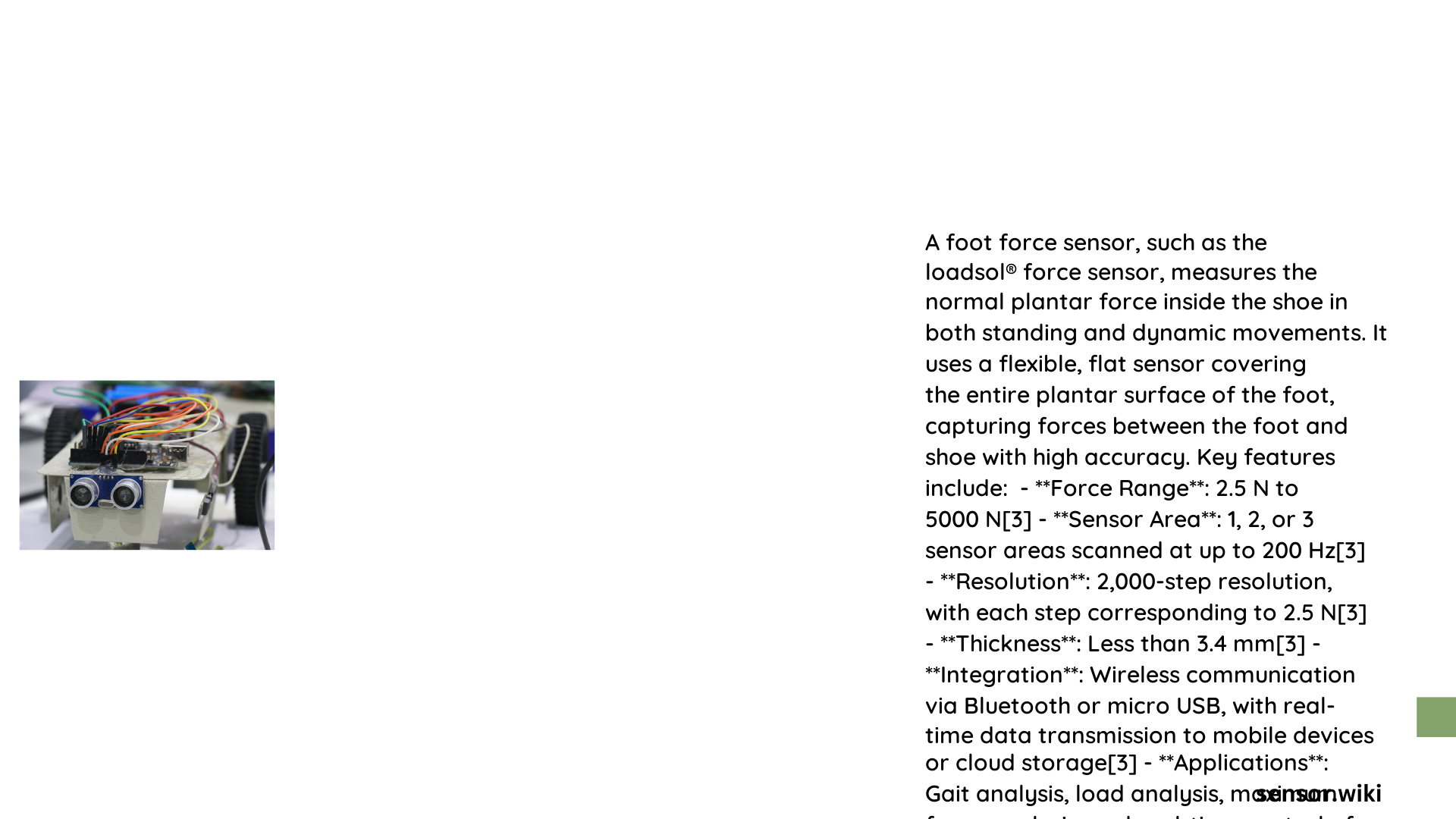Foot force sensors are sophisticated technological devices designed to measure and analyze the complex pressure distributions and dynamic forces generated during human movement. These precision instruments utilize advanced sensing technologies like piezoresistive and capacitive mechanisms to capture intricate details of foot interactions with surfaces, providing researchers, athletes, and medical professionals with critical insights into human locomotion, balance, and performance dynamics.
What Are Foot Force Sensors?
Foot force sensors are specialized measurement devices engineered to detect and quantify the forces exerted by human feet during various activities. These sensors typically consist of multiple pressure-sensitive elements embedded within insoles or integrated into measurement platforms.
Key Components of Foot Force Sensors
| Component | Function | Technology |
|---|---|---|
| Pressure Sensitive Resistors | Detect Force Variations | Piezoresistive |
| Signal Conditioning Circuit | Process Sensor Signals | Electronic Amplification |
| Data Acquisition System | Record and Analyze Data | Digital Processing |
How Do Foot Force Sensors Work?

Foot force sensors operate through sophisticated mechanisms:
- Resistance Transformation
- Sensors convert mechanical pressure into electrical resistance
-
Varying pressure generates proportional electrical signals
-
Signal Processing
- Electronic circuits amplify and condition sensor signals
-
Microcontrollers convert analog signals to digital data
-
Data Visualization
- Advanced software maps pressure distributions
- Real-time graphical representations of force dynamics
What Are the Primary Applications?
Foot force sensors find extensive applications across multiple domains:
- Sports Performance Analysis
- Biomechanical movement assessment
- Technique optimization
-
Injury prevention strategies
-
Medical Rehabilitation
- Gait analysis
- Prosthetic design
-
Balance disorder diagnosis
-
Ergonomic Research
- Workplace safety evaluation
- Footwear design improvement
- Ergonomic intervention development
What Technical Specifications Matter?
Critical technical parameters include:
- Measurement Range: 2.5 N to 5000 N
- Resolution: 2.5 N per step
- Scanning Frequency: Up to 200 Hz
- Temperature Tolerance: -20°C to 60°C
What Challenges Exist in Foot Force Sensor Technology?
Researchers and engineers face several challenges:
- Complex signal calibration
- Environmental interference
- Cost of high-precision systems
- Miniaturization requirements
Future Technological Directions
Emerging trends in foot force sensor development include:
- Wireless data transmission
- Machine learning integration
- Miniaturized flexible sensors
- Enhanced computational algorithms
Conclusion
Foot force sensors represent a critical technological intersection between biomechanics, electronics, and data science, offering unprecedented insights into human movement dynamics.
